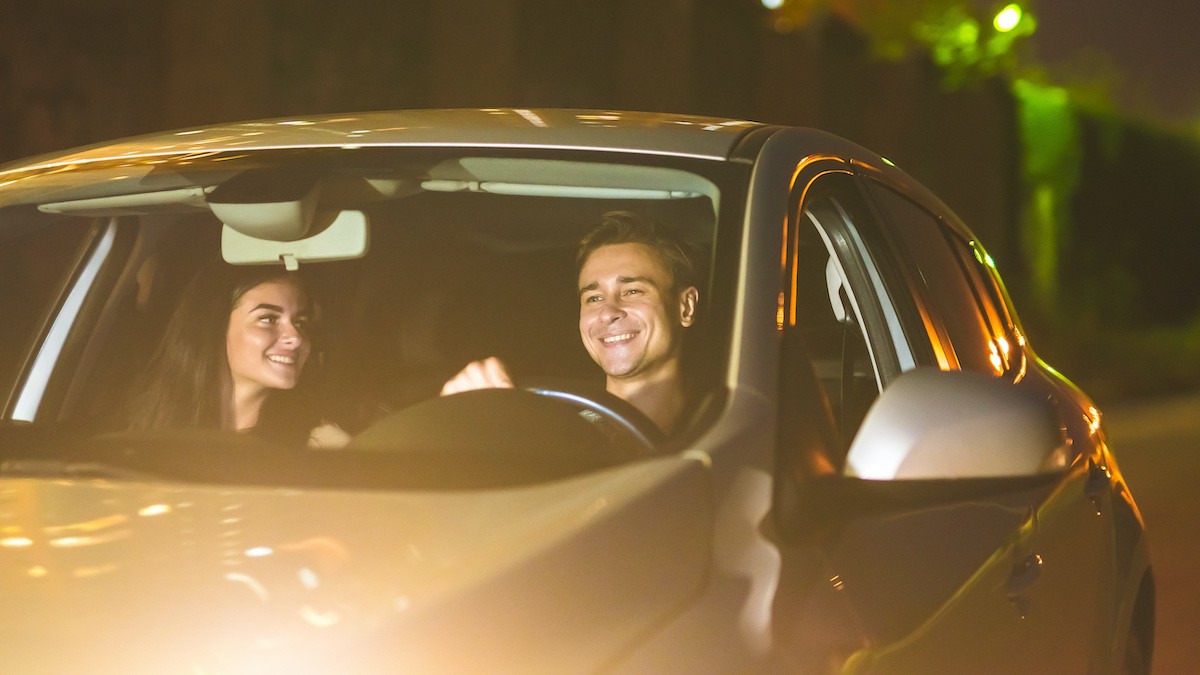Remember being told as a new driver that having the interior car light on while driving is against the law? Many of us grew up with this parental decree, often without a clear explanation. You might have even found yourself reflexively switching off the dome light as an adult, just out of habit. But is there any truth to this old driving myth? Let’s shed some light on the real rules of the road when it comes to your car’s interior lights.
The Legality of Interior Car Lights: Separating Fact from Fiction
Good news for snack-seeking passengers and map readers: in the vast majority of states, it is not illegal to drive with your interior car light on. That’s right, despite what you might have been told, there’s no blanket law prohibiting the use of your dome light while your vehicle is in motion.
However, while technically legal in many places, driving with the interior light illuminated isn’t always the safest choice. There’s a reason why this myth has persisted for so long, and it’s rooted in genuine safety concerns.
 Couple driving car at night with interior light on: Is it illegal to have car light on?
Couple driving car at night with interior light on: Is it illegal to have car light on?
Why the Confusion? Safety Concerns and Distracted Driving
The primary reason parents often discourage interior lights is due to safety. Driving at night requires optimal vision of the road ahead. An illuminated dome light can significantly reduce a driver’s visibility in several ways:
- Vision Impairment: The bright interior light can cause glare and strain on your eyes, making it harder to see the darker road outside. This is especially true in low-light conditions where your pupils are dilated to gather more light.
- Windshield Reflection: The interior light can reflect off the inside of your windshield, creating a distracting and potentially blinding reflection that obscures your view of the road and other vehicles. This reflection can be particularly problematic when it rains or when the windshield is slightly dirty.
Beyond direct vision impairment, using the interior light often indicates something else: distracted driving. According to the National Highway Traffic Safety Administration (NHTSA), distracted driving is any activity that diverts attention from the primary task of operating a vehicle safely.
Switching on the interior light usually happens because someone is trying to do something other than focus on driving. Perhaps a passenger is searching for a lost item, consulting a map, or even applying makeup. These actions, facilitated by the interior light, take attention away from driving and can lead to dangerous situations.
Distracted Driving and Potential Legal Repercussions
While you likely won’t be pulled over solely for having your interior light on, the act of using it can contribute to a traffic stop. Law enforcement officers are vigilant about distracted driving. If an officer observes you driving with your dome light on, and it appears you are engaged in a distracting activity, they may pull you over.
In some areas, like Los Angeles as mentioned in the original article, you might be cited for “unsafe speed for conditions.” This means even if you aren’t speeding, an officer can determine that your speed is unsafe given the distracting circumstances – such as using your interior light to do something that takes your focus off the road. This citation isn’t about the light itself being illegal, but about the unsafe driving behavior associated with its use.
Best Practices for Interior Car Light Use
To ensure safety and avoid any potential legal issues related to distracted driving, the best advice is to minimize interior light use while driving, especially at night.
- Pull Over: If you or your passenger needs to use the interior light to find something or consult a map, the safest course of action is to pull over to a safe location, like a parking lot or the side of the road (where permitted and safe to do so).
- Prepare in Advance: Encourage passengers to locate items or organize themselves before the journey begins or during stops.
- Passenger Responsibility: If a passenger insists on needing light, remind them of the potential distractions and safety concerns. Perhaps a small flashlight or phone screen (used responsibly and briefly) could be a less intrusive alternative in some situations, though even these can be distracting.
Conclusion: Safety First, Lights Off (While Driving)
So, is it illegal to have the light on in your car? Generally, no. But is it a good idea to drive with it on? Generally, no. While the old “it’s illegal” adage isn’t strictly true in most places, the underlying message about safety is crucial. Prioritize safe driving practices, minimize distractions, and keep those interior lights off while your car is in motion at night. Your focus should be on the road ahead, ensuring a safe journey for yourself and everyone around you.